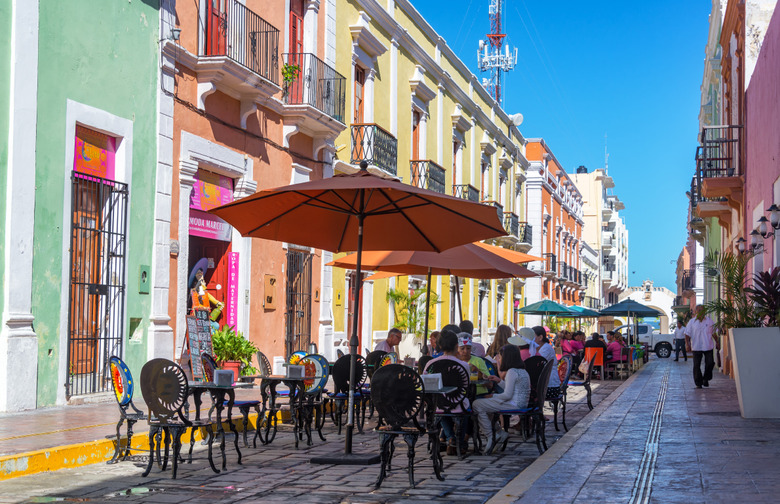9 Countries That Eat Cats And Dogs (Slideshow)
Eating cats and dogs is not only extremely popular in Taiwan but there is a prolific underground trade supplying strays to local restaurants and meat vendors across the country. The meat is usually added to other, more conventional meat dishes for added flavor. For the record, the government has passed legislation banning the practice, but it still persists and is very popular, particularly in smaller towns and villages.
The United States
Yes, even in some parts of the U.S. you'll find people that are completely okay with eating puppies. There've been reports aplenty, in particular, across Hawaii about people eating stray cats and dogs for years. There are also plenty of pets that are kidnapped for human consumption. An eight-year-old Labrador named Caddy was recently dog-napped from an equipment shack at a golf course (where his owner left him while he was teeing off) by local landscape workers who butchered and ate him.
Hawaii's house committee recently tried to pass a bill banning the eating of cats and on the island, but it was shelved because there was too little concrete, legislative evidence of the practice (meaning that while it does happen a lot, not everyone goes to jail for it so there aren't formal records). It takes the American "hot dog" to a whole new level, no?
We're familiar with the idea of huskies pulling sled teams through the furious snow drifts of the Poles. The harsh weather conditions make it the sort of place where certain winter dog breeds thrive and humans couldn't really get by without them. Yet, when the going gets particularly tough, the tough get going... all the way to the soup pot. Historically, dogs have been used as an emergency food source in parts of Siberia, Alaska, northern Canada, and Greenland for centuries, so it's really a tried and tested formula.
Korea
It's the world's 14th largest economy, yet every year around 2.5 million dogs are consumed as a "health" food in South Korea. While dog meat is eaten throughout the year, it is particularly popular in the summer. Some Koreans believe that eating dog on the warmest days of the year, known as "Bok Nal," helps beat the heat. While animal rights groups are furious about the trend (the animals are usually electrocuted, beaten, or hanged to death) the sale of dogs for food is a $2 billion a year industry in the country.
Dogs were bred for their meat by the Aztecs. For hundreds of years, eating dog meat has been a staple of the culinary culture of the region. In some parts of the country, the practice is still going strong, particularly among the homeless, very poor, and destitute.
China
Cat and dog meat, a longstanding culinary tradition in many parts of Asia, can be found on plenty of menus across China. In southern Chinese cities like Guangzhou, dogs are kept in holding pens and supplied to restaurants for a variety of menu items like dog hot pot, dog soup, and dog steak. "Dog meat is good for your health and metabolism," a local restaurant owner told CNN. "In the summer it helps you sweat."
French Polynesia
There have long been cats and dogs in Tahiti and other Polynesian islands, and they were used as a food source like any other for hundreds of years. Then the Europeans arrived in 1769 with their ideas that cats and dogs were really loveable household pets that shouldn't be turned into stew. Yet the practice persists, particularly when there's not enough meat available for more plebian fare (even Captain Cook and his men were reported to have eaten dog meat when they first arrived).
Switzerland
The practice of eating cat and dog meat is surprisingly common amongst farmers in this Alpine nation. The preferred doggy meat is a relation to the Rottweiler, which is apparently quite "beefy" and a favorite in rural portions of the cantons of Appenzell and St. Gallen, among others. Consumption is also quite popular in the Rhine Valley. And dog lard is sometimes used in Switzerland for medicinal purposes.
While eating cats and dogs is not illegal in Switzerland, the animals are still required to be killed humanely (the law doesn't necessarily dictate what counts as "humane").
Vietnam
Every year thousands of stray cats and dogs are snatched up from the streets of Ho Chi Minh City and sold to local restaurants and street food vendors. The demand for dog meat is, in fact, so high that it's the center of a very lucrative black-market trade. Dog meat can sell for around $10 per kilogram (just under $5 a pound) and is used for dishes like dog stew, served warm in a soup of blood. Other dishes served are barbecued dog with lemongrass and ginger, steamed dog with shrimp-paste sauce, and skewered dog, marinated in chiles and coriander.








